Trees are essential to creating memorable spaces in a landscape design. Used singly or in groups, they play with light in different ways and can create new types of spaces that enclose, focus, divide or unite the garden. Tree placement and how trees are planted in relation to one another and other spaces within the garden are critical components of a landscape’s design. Here are five ways to use trees to create unique garden spaces.
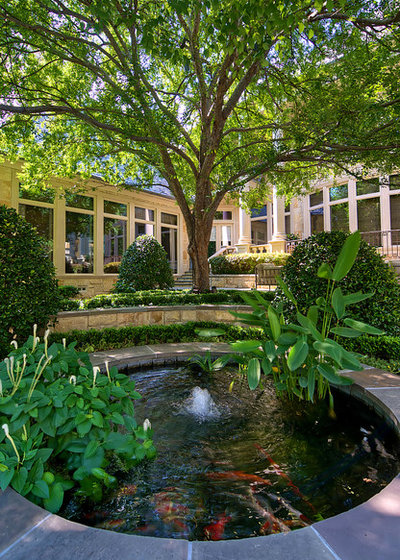
Harold Leidner Landscape Architects
1. Specimen tree. A specimen tree is any tree that’s used alone as a major focal point in the garden. It can be a large shade tree with a spectacular spreading form and strong upright trunk, like the Chinese elm (
Ulmus parvifolia) shown here. A specimen tree in a landscape defines the space by creating shade and a focal point. Specimen trees get better with age and should be planted with plenty of room to spread and grow.
Other ways to use specimen trees include choosing specialty cultivars with unique forms, like weeping varieties, or even smaller ornamental trees, to create a focal point in a smaller space.
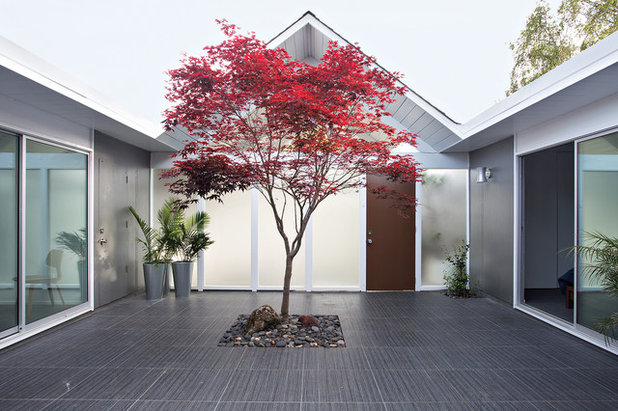
Klopf Architecture
One specimen, Japanese maple (
Acer palmatum), stands strong with contrasting red leaves against the gray paving and neutral tones of this home’s facade.
11 Japanese Maples for Breathtaking Color and Form
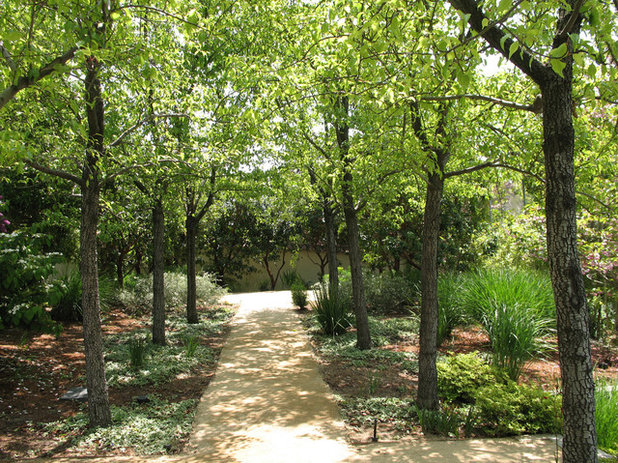
Arterra Landscape Architects
2. Allée. The allée is a path or driveway lined by trees. It creates a kind of outdoor hallway; the trees partially enclose the path or driveway to provide shade and a rhythm of vertical trunks. The allée is a classic landscape planting type and adds drama to a driveway or path.
The tree types you choose and how far apart you plant them determines how the allée creates shade, enclosure or openness. Shown here is an allée formed by a walking path through a garden. The trees are spaced to let some light through onto the path below.
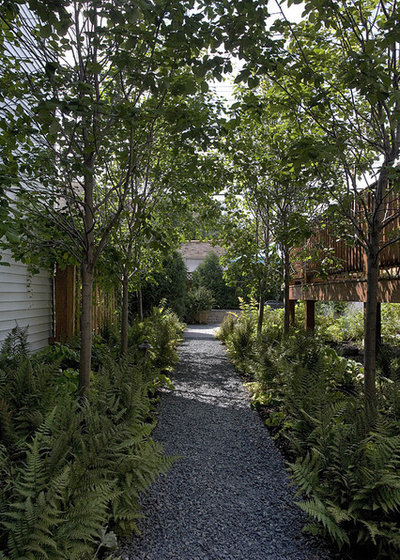
The Garden Consultants, Inc.
This allée is composed of ‘Robin Hill’ serviceberry (
Amelanchier x grandiflora ‘Robin Hill’) trees and a small gravel path. Ferns create a textured ground plane under the trees.
See more ways to add formal grandeur to the garden
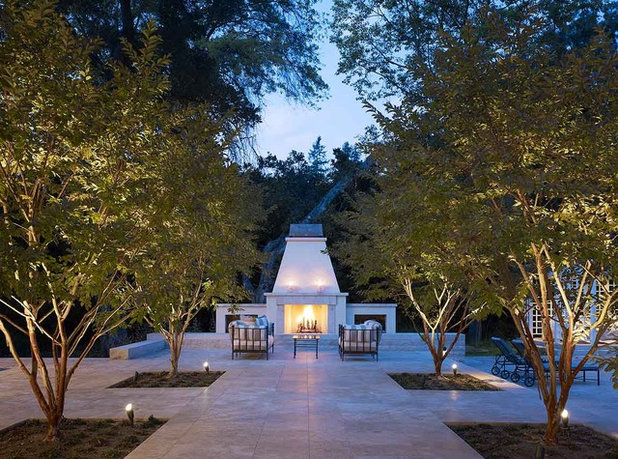 3. Quad.
3. Quad. A quad of trees is four trees planted on a grid. It’s an architectural planting style that works well with clean lines and paving. You can also create a grid of trees without paving by planting in grass or ground cover to create a space akin to an orchard.
A quad of trees works well with small flowering trees or fruit trees when planted with equal spacing on all sides. A quad of trees is like an outdoor garden room in itself, because it creates a square in the center where you can have seating or a water feature, or leave it open.
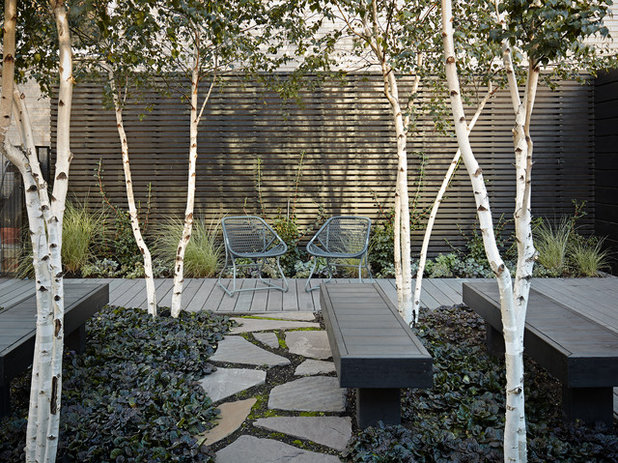
Burns and Beyerl Architects
Shown here are four paper birch (
Betula papyrifera) trees planted in a small courtyard garden to create dappled shade and give a nice vertical structure to the small space.
5 Best-Behaved Trees to Grace a Patio

A quad of trees flanks this pool — a pair at each end with an upright form.
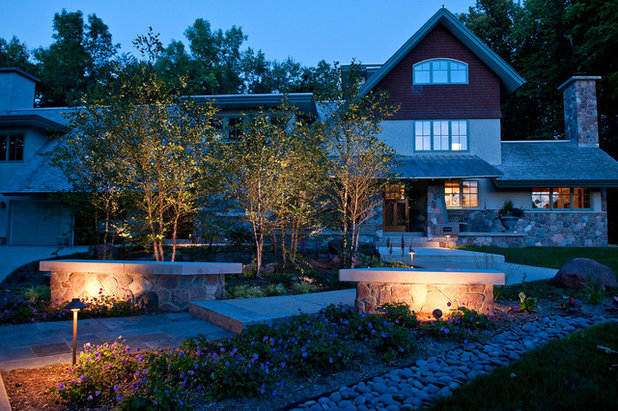
Ginkgo Leaf Studio
4. Small grove. A small grove of multistemmed trees brings lushness to small spaces. Small groves are different from grids because they are spaced more loosely, and often not symmetrical. Small groves can be planted in clumps with enough spacing between for the trees to spread, or they can be planted in a grid for a more formal garden.
A small grove of birch trees in an irregularly spaced planting makes a small but lush garden space in the front yard seen above.
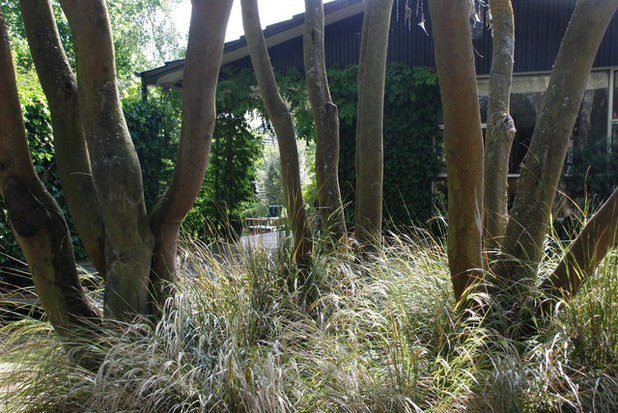
Earthwork Landscape Architects
Shown here is a small grove of three multistem trees with thick trunks planted among long grass. Notice that the trees have varying numbers of trunks for a more naturalistic look.
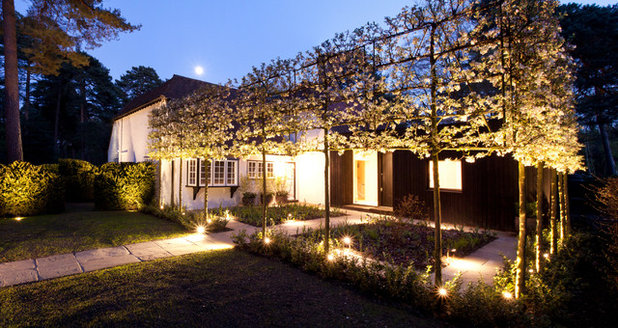
Rosangela Photography
5. Pleached trees. Tree pleaching is a method of training tree branches into narrow spaces, similar to an espalier. Pleaching can also be called a flying hedge and is gaining popularity in the United States. The pleaching creates a line of trees that have been pruned and trained into a very narrow canopy to create an elevated vegetation screen. Here you can see the branches have been trained onto supports that keep the vegetation very narrow.
Pleaching can create crisp lines around a boxed space or can be used to separate one space from another. Precision and regular maintenance are important for pleached trees to look good. Make sure the trees are spaced and aligned precisely and the branches pruned regularly to maintain the look.
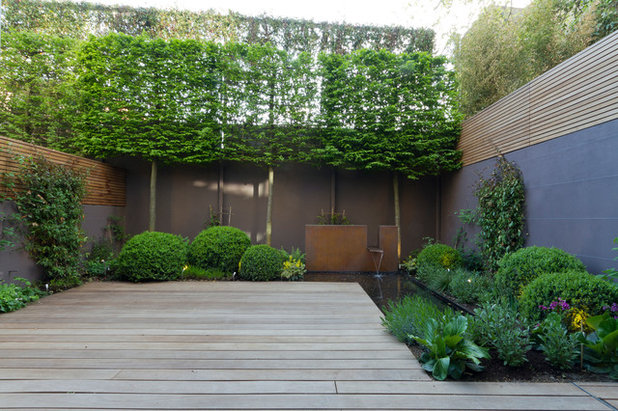
Landform Consultants Ltd
Three pleached trees create privacy at the back edge of this small courtyard garden.





